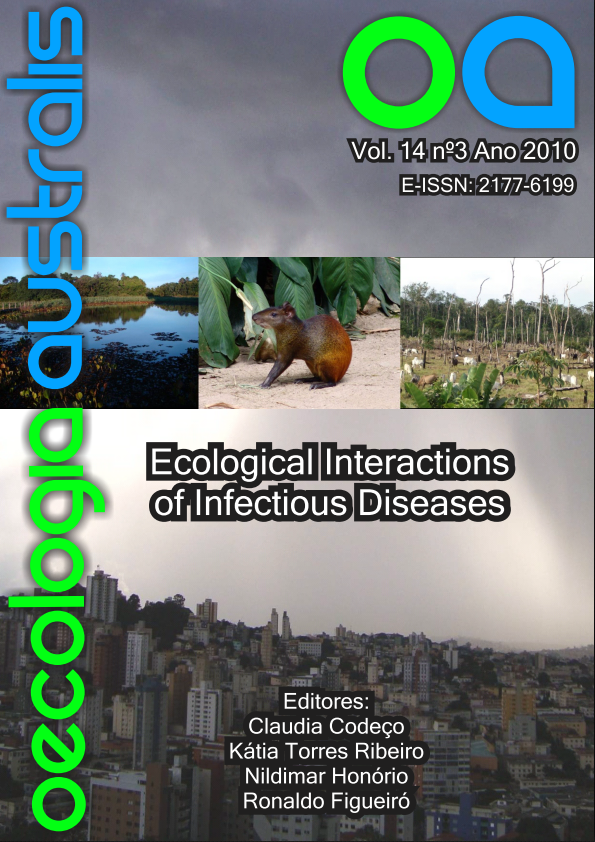SYMBIOSIS STABILITY, PATHOGENS AND HEALTH OF REEF-BUILDING CORALS: INSIGHTS ON THE ECOLOGY OF THE HUMAN BODY
Keywords:
Human microbiota, Scleractinia, Symbiodinium, symbiont, pathogen.Abstract
In search of insights for general rules about the host-symbiont-pathogen interacion, a review on the ecology of the interaction between hermatypic corals (Cnidaria: Scleractinia) and their symbiotic zooxanthellae (photosynthetic dinoflagellates, Symbiodinium) is done. In the last three decades a global decline on coral reef barriers has been observed and this has been atributed to, among other causes, two processes that directly interferes in the coral-zooxanthellae interaction: ‘coral bleaching' and epidemics. Bleaching events are characterized by a sudden loss of zooxanthellae, making corals calcareous skeleton visible and possibly leading to a mass mortality on coral colonies. Although it is not possible to establish causal relations, the intensities of epidemics and bleaching events are correlated, indicating that the symbiosis is a protective factor on coral's health. Among the insights for human epidemiology are: the recurrent evoltuion of pathogens and the interference of symbionts on the host-pathogen interaction, either by direct competition exclusion or by an indirect effect on host's enegy budget.


